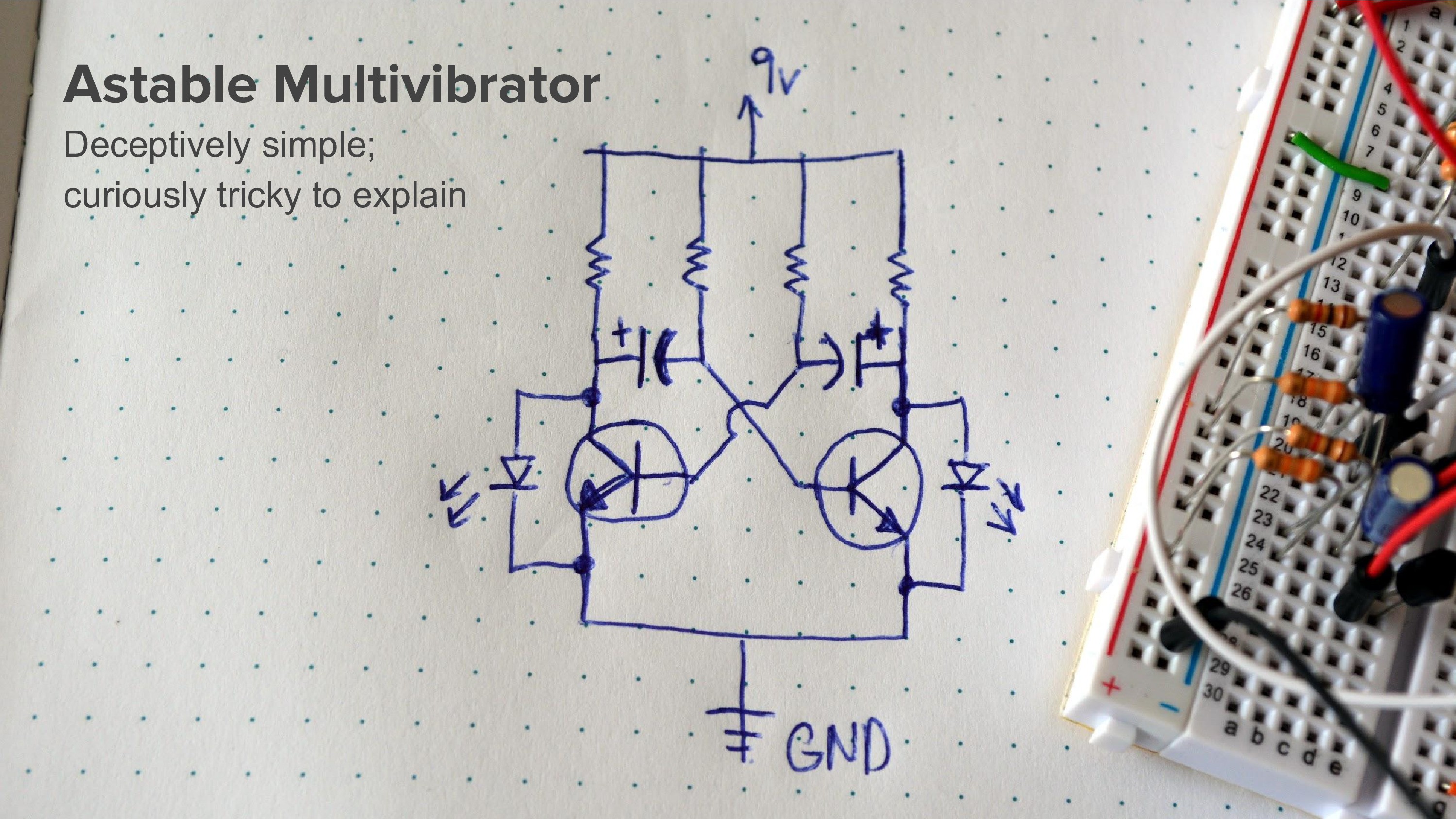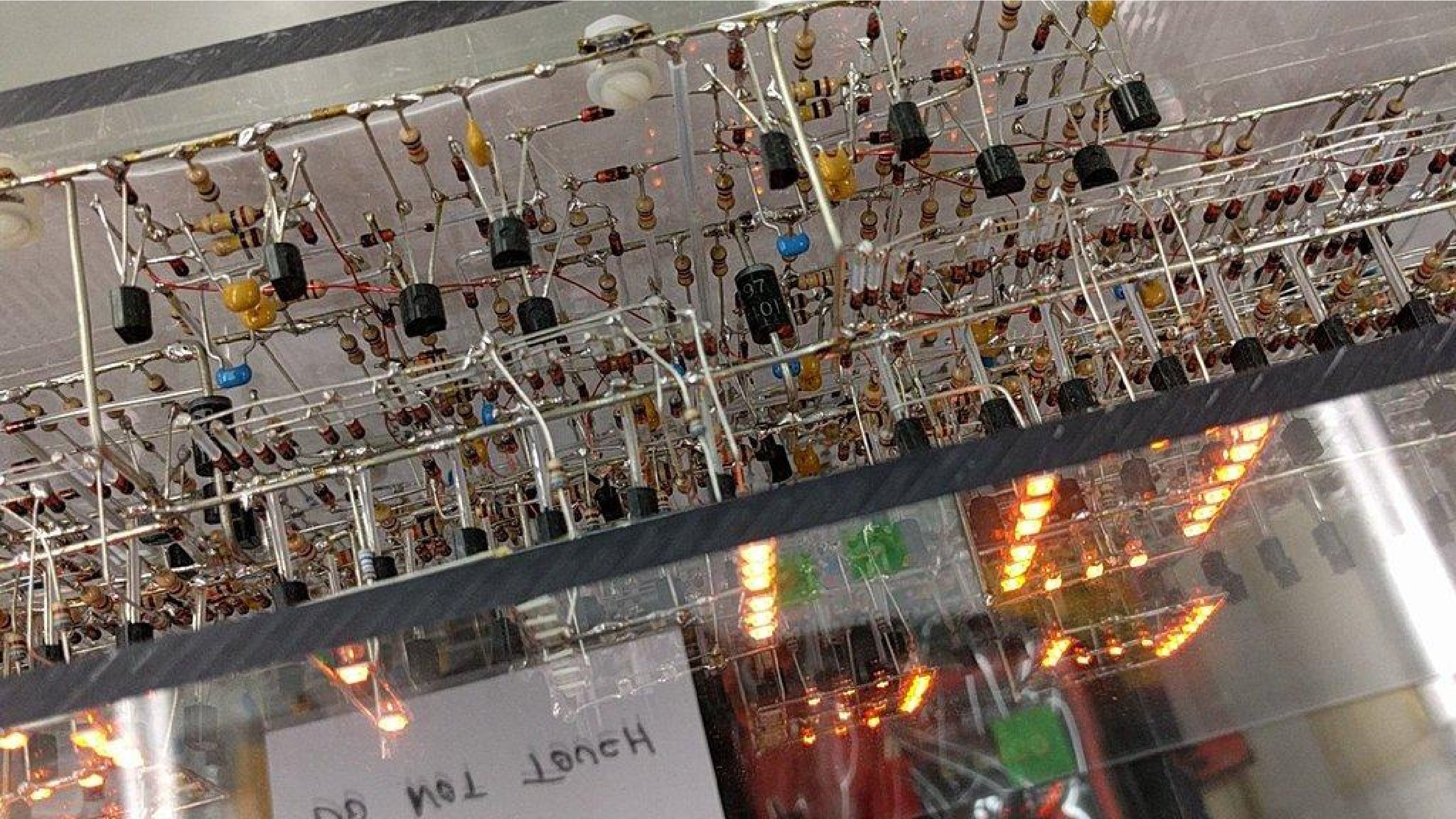I've been doing some exploring on the analog side of things. I started by building the classic astable multi-vibrator which uses a pair of transistors, each with an RC time constant, to alternately blink LEDs.

I had a fun time building it using an air-wire method

After doing this I went on to build some ring oscillators, and to play around with fading LEDs in and out. But having seen this discrete clock at Tanner Electronics in Dallas, Texas I've had it in the back of my mind that I want to give it a try.


There's quite a bit of complexity here, but you can start rather simply. What will it take to go from a 60 Hz mains frequency down to a 1 Hz clock frequency? I need a divider and one way of doing this is using a D flip-flop. I looked around and then used falstad to simulate this one build using NAND logic gates:

Two signals going out on the right (each illustrated with an LED) are 1/2 the frequency of the clock coming in on the left. But what will it take to build this in discrete logic?
Below is the simplest circuit I could find to build a NAND gate:

This gate is build with just 3 components: a pull-up resistor and two N-channel MOSFETs. With this proven as a simulation the next step is to build a D flip-flop with them:

You begin to get an idea of how big this project will become. There are 13 MOSFETs in this single D flip-flop. To divide down the clock signal I'm going to need

(Count is shown as Off-state of the LEDs)
- American Line Voltage = 60 Hz
- Watch for binary 0b111100 to get 1 Hz
- Need: 4-input NAND and a reset circuit
I can count to 60 using this set of flip-flops, but I will still have 3 bits left over when I get there. To recognize the proper signal division I need a 4-input NAND gate that triggers a way to reset all of the flip-flops. I currently have no solution for this reset circuit and need to do more research.
But what I do know is that some quick math drives home the difficulty of this project:

I do see this as a long-term project. It's probably along the 5-10 year timeline for me. But I think it's an interesting way to delve into some of the hardware riddles that are all around us but never see the light of day for most people.
 Mike Szczys
Mike Szczys



 Eric Ljungquist
Eric Ljungquist
 dic3jam
dic3jam
 Tim
Tim
 Dr. Cockroach
Dr. Cockroach
For discrete components, use diode to diode logic with transistors only for inverting. You can build a latch with TWO transistors, four resistors, and four diodes. More inputs can be added for one more diode each.